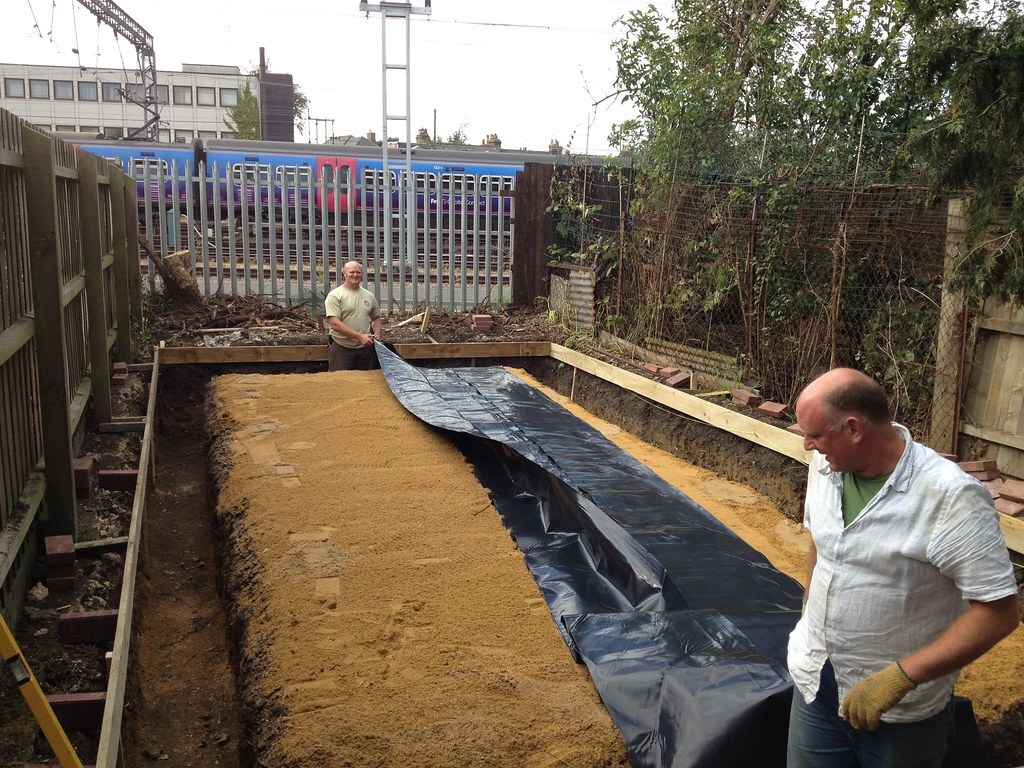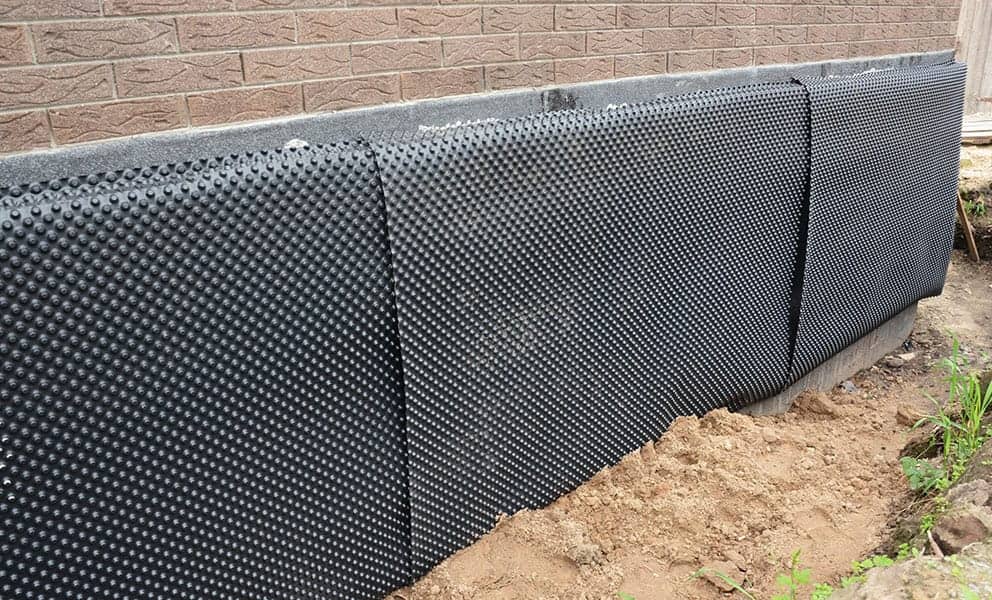Introductory tutorial to understanding rising damp and damp removal newcastle
Wiki Article
Discovering the Various Methods and Solutions for Effective Damp Proofing
Wetness in structures presents significant challenges to both architectural stability and indoor air high quality. Different strategies and solutions have actually arised to combat this pervasive concern. From standard damp-proof membrane layers to innovative chemical treatments, each technique supplies unique advantages. Recognizing these alternatives is necessary for effective moisture control. Selecting the appropriate service depends on particular building problems and requirements, prompting additional exploration into the most reliable damp proofing strategies readily available.Recognizing the Reasons of Moisture
Although wetness can occur from numerous sources, comprehending these causes is important for reliable removal. Commonly, moisture originates from 3 main resources: increasing damp, passing through moist, and condensation. Rising wet happens when groundwater travels up-wards via permeable materials, such as brick or rock, typically as a result of a lack of an effective barrier (damp specialist newcastle). Penetrating damp is normally brought on by exterior elements, including roofing system leaks, faulty gutters, or damaged walls, permitting water to infiltrate a home. Condensation, on the other hand, arises from excess wetness airborne, typically aggravated by bad air flow and temperature level distinctions, leading to water beads basing on surfaces. Determining these underlying issues is important, as each sort of dampness needs a tailored approach for removal. Proper assessment helps in establishing the most efficient options, inevitably protecting the structural stability of a building and improving interior air qualityTypical Damp-Proof Membranes

Chemical Damp-Proofing Solutions
Chemical damp-proofing options provide an ingenious approach to stopping dampness breach in buildings. These techniques commonly include the application of liquid chemicals that penetrate stonework and develop an obstacle against increasing wet. Frequently used chemicals include silanes, siloxanes, and various other water-repellent representatives that react with surface materials to develop a hydrophobic layer.The application process generally requires boring openings right into the wall surfaces, injecting the chemical remedy, and allowing it to cure. This approach is specifically beneficial for older frameworks where traditional damp-proof membrane layers may be not practical. Chemical damp-proofing can be much less turbulent and much more economical than substantial improvement projects.While efficient, these options depend on correct application and ecological problems for peak efficiency. damp removal newcastle. Normal upkeep and surveillance are necessary to guarantee the longevity of the damp-proofing treatment. On the whole, chemical damp-proofing represents a flexible choice for guarding structures against moisture-related damageTooth Cavity Wall Building Techniques
Dental caries wall surface building techniques provide various advantages, particularly in dampness control and power performance. By including an air void in between 2 layers of stonework, these wall surfaces properly alleviate water ingress while improving insulation. This mix not only protects frameworks from moisture but additionally adds to minimized energy intake.Advantages of Dental Caries Walls
When taking into consideration reliable moist proofing techniques, the advantages of cavity wall surfaces stick out prominently. Dental caries walls are composed of 2 separate layers, developing an air gap that properly decreases wetness infiltration. This layout decreases the risk of wetness, as the external wall surface functions as an obstacle against rain and water ingress. In addition, cavity wall surfaces enhance thermal insulation, which adds to energy efficiency by decreasing warmth loss. They additionally supply sound insulation, helping to create a quieter interior setting. The air gap allows for ventilation, which aids in moisture control and minimizes the chance of mold and mildew growth. These benefits not only improve the overall comfort of a building but also add to its longevity and architectural honesty.Moisture Control Strategies
Efficient wetness control techniques are critical in tooth cavity wall building and construction to ensure long-term defense versus dampness. One key method involves the unification of weep openings, which help with water drain from the tooth cavity, avoiding buildup. Furthermore, the use of breathable membrane layers can help handle moisture levels while allowing entraped vapor to get away. Proper placement of insulation is additionally crucial, as it ought to not obstruct water drainage paths. Making certain that the external leaves of the tooth cavity wall surface are constructed with water-resistant products enhances general toughness. Regular maintenance checks are important to recognize any blockages or damage early, securing the framework's integrity. Eventually, a combination of these methods develops a durable protection versus wetness breach in cavity wall surfaces.
Insulation and Energy Efficiency
Insulation plays an essential function in improving power efficiency within tooth cavity wall building. By integrating insulating materials, these walls create a thermal obstacle that reduces warm loss and minimizes energy usage. Reliable insulation not only assists maintain a secure interior temperature yet additionally reduces the danger of wetness, as it stops condensation within the wall cavity. Numerous techniques, such as using stiff foam boards or mineral woollen, can be employed to achieve optimal insulation performance. In addition, appropriate installation is important to guarantee that voids and spaces are decreased, which can otherwise endanger power efficiency. Ultimately, a well-insulated cavity wall surface contributes considerably to general sustainability and reduces heating & cooling expenses for homeowners.Exterior Damp Proofing Techniques
External damp proofing approaches are necessary for shielding frameworks from moisture infiltration. 2 effective methods include the application of waterproof membranes and the installation of French drains. These solutions aid mitigate water build-up and maintain the integrity of structures.Waterproof Membrane Application
While different approaches exist for preventing wetness access, the application of waterproof membranes continues to be a highly effective outside wet proofing technique. These membranes are typically made from materials such as polyethylene, rubber, or changed asphalt, providing a robust obstacle versus water penetration. The installment procedure involves applying the membrane layer to the exterior surfaces of structures or walls, ensuring complete protection to stop leakages. Correct adhesion and sealing at joints are important to making the most of performance. Water-proof membrane layers can be used in numerous forms, including liquid finishings and sheet membrane layers, permitting versatility based on the details requirements of the framework. This approach not just safeguards buildings from dampness but likewise enhances their durability and architectural stability.French Drainpipe Installment
One reliable approach for taking care of groundwater and protecting against dampness accumulation around a structure's foundation is the installment of a French drainpipe. This drainage system contains a trench filled up with gravel and a perforated pipeline that redirects surface area water away from the structure. Correct installment needs cautious planning, guaranteeing that the drain slopes far from the structure to help with optimal water flow. Furthermore, the area of the drain is vital; it must be placed in locations vulnerable to merging or excess dampness. Normal maintenance, including clearing debris from the gravel and making certain the pipeline stays unobstructed, is crucial for long-lasting efficiency. Eventually, a well-installed French drain can greatly lower the risk of water-related concerns in foundations and cellars.Interior Waterproofing Approaches
Interior waterproofing methods are crucial for shielding a structure's interior from dampness infiltration and prospective water damage. These techniques generally involve the application of customized materials and techniques made to create a wetness barrier within the framework. One usual method is using water-proof finishings or sealers on wall surfaces and floors, which avoid wetness from penetrating surfaces.Additionally, installing indoor drainage systems, such as sump pumps, can properly take care of water build-up in cellars and crawl areas. One more technique includes the use of vapor obstacles, which are installed to hinder moisture movement from the ground into living spaces.Moreover, attending to any splits or voids in wall surfaces or foundations with appropriate sealers guarantees a complete defense against water intrusion. By implementing these indoor waterproofing strategies, residential property owners can considerably minimize the threat of mold and mildew growth, architectural damage, and various other moisture-related concerns. Correct implementation of these strategies is important for long-term security and structure honesty.Normal Upkeep and Evaluation Practices
Regular maintenance and evaluation techniques are essential for ensuring the long-term effectiveness of moist proofing options in any building. Regular checks enable residential property proprietors to identify very early indicators of wetness breach, such as peeling off paint, mold and mildew development, and moldy smells. These signs can indicate underlying concerns that need prompt attention.Inspections must be conducted a minimum of each year, concentrating on susceptible areas like cellars, creep areas, and exterior wall surfaces. During these evaluations, homeowner must check out sealants, water drainage systems, and ventilation to confirm they function correctly.Additionally, preserving downspouts and gutters is essential, as blocked systems can lead to water build-up near the structure. Implementing a normal maintenance schedule, along with timely repair services, can considerably prolong the lifespan of damp proofing steps and protect the architectural integrity of the structure. Proactive procedures eventually add to the total health and wellness of the living setting.Often Asked Questions
Exactly How Lengthy Does Damp Proofing Usually Last?
The period of damp proofing performance varies, usually lasting between 20 to half a century. Variables such as application top quality, environmental problems, and maintenance practices considerably affect the durability of the wet proofing therapy.
Can I Damp Evidence My Home Myself?
The specific contemplated the feasibility of do it yourself damp proofing. With proper research study and the right products, it is possible. They likewise identified the relevance of specialist assistance to guarantee resilient effectiveness and stop future issues.What Are the Signs of Inadequate Damp Proofing?
Indications of inefficient damp proofing include relentless mildewy odors, noticeable mold growth, peeling off paint, moist patches on wall surfaces, and wood degeneration - damp proofing newcastle. Homeowners should attend to these issues without delay to avoid more damage and health and wellness concernsDoes Damp Proofing Affect Indoor Air Top Quality?

Just How Much Does Professional Damp Proofing Price?
Professional damp proofing expenses vary considerably, usually varying from $1,000 to $5,000 depending on the residential or commercial property's size, the extent of the wet problem, and chosen approaches. Each circumstance calls for a customized analysis for accurate rates. Commonly, dampness stems from three primary sources: increasing wet, passing through damp, and condensation. When taking into consideration reliable damp proofing methods, the advantages of dental caries walls stand out plainly. External damp proofing techniques are vital for protecting frameworks from wetness seepage. While numerous methods exist for protecting against dampness access, the application of water-proof membrane layers remains website an extremely reliable external moist proofing method. Indications of inefficient wet proofing consist of relentless moldy smells, visible mold development, peeling off paint, moist patches on walls, and wood decay.Report this wiki page